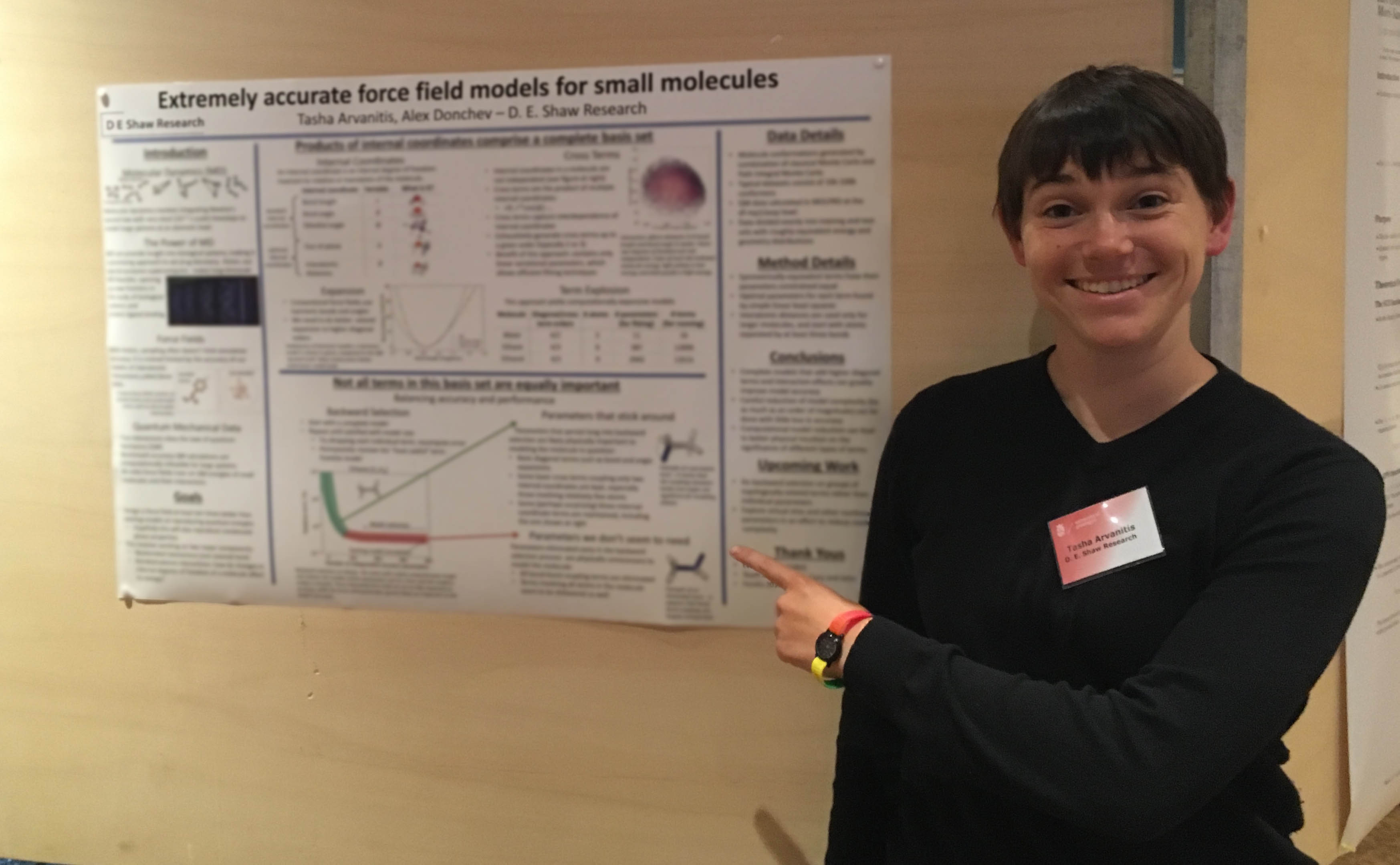FemEx
, 3 min, 488 words
Tags: presenting-my-work
This summer I was lucky enough to attend FemEx 2017 in the Netherlands. FemEx is a conference promoing female excellence in computational and theoretical chemistry, so it was right up my scientific alley! Add to that the fact that I've been studying Dutch for almost two years now, and it made this conference a perfect fit for me.
With the help of my manager and advisor at work, I put together a poster on some of my recent research, which I was able to present at the conference. I got a bunch of interesting questions and suggestions, and as always, explaining my work helped me understand it better than before.

It was, predictably, an amazing experience. I met a ton of amazing female powerhouses in chemistry (and a few men too), discussed science and life in general with fellow attendees, and generally learned a ton in a very short period of time.
A few highlights:
- Several people are doing intriguing work on reactive force fields, including work from the ReaxFF team (presented by Dr. Ole Carstensen) to improve parametrization for reaction rates and a fascinating force field called LEWIS (presented by Dr. Judith Hertzfeld) that features explicit electron pairs and replicate qualitative geometric features of several types of molecules
- There was some interesting work on meso-scale modeling using a finite elements approach presented by Dr. Sarah Harris, whose lab has just released an open source project for said models at ffea.bitbucket.io.
- Dr. Rosa Bulo presented on work with QM/MM and energy conservation - in particular she's found that a good force field for the MM component is critical to preventing depletion in the region where interactions transition from QM to MM.
- One talk discussed how stretching bonds to breaking point affects their ability to form hydrogen bonds. Dr. Katarzyna Pernal showed that electron rearrangements that result from stretching a bond briefly strengthen van der Waals interactions, which is a somewhat counterintuitive result.
- DNA repair seemed to be a secret theme of the conference: no fewer than three talks were presented on work studying various DNA repair mechanisms, ranging from QM/MM (a method that blends quantum mechanical calculation with faster molecular mechanics outside the region of interest, presented by Dr. Shirin Faraji) to plain molecular mechanics on tandem lesions (presented by Dr. Elise Dumont) to simulated infrared spectroscopy (presented by Ana Cunha).
- Finally, I was incredibly honored to win a prize based on the poster and my presentation thereof. Thank you very much to the International Journal of Quantum Chemistry and Journal of Computational Chemistry for sponsoring the prize, and to the judges at FemEx for choosing me!
On the whole, I met an inspiring group of chemists and look forward to following their work in the future. Together we can change gender biases and increase the proportion of historically underrepresented minorities in science!